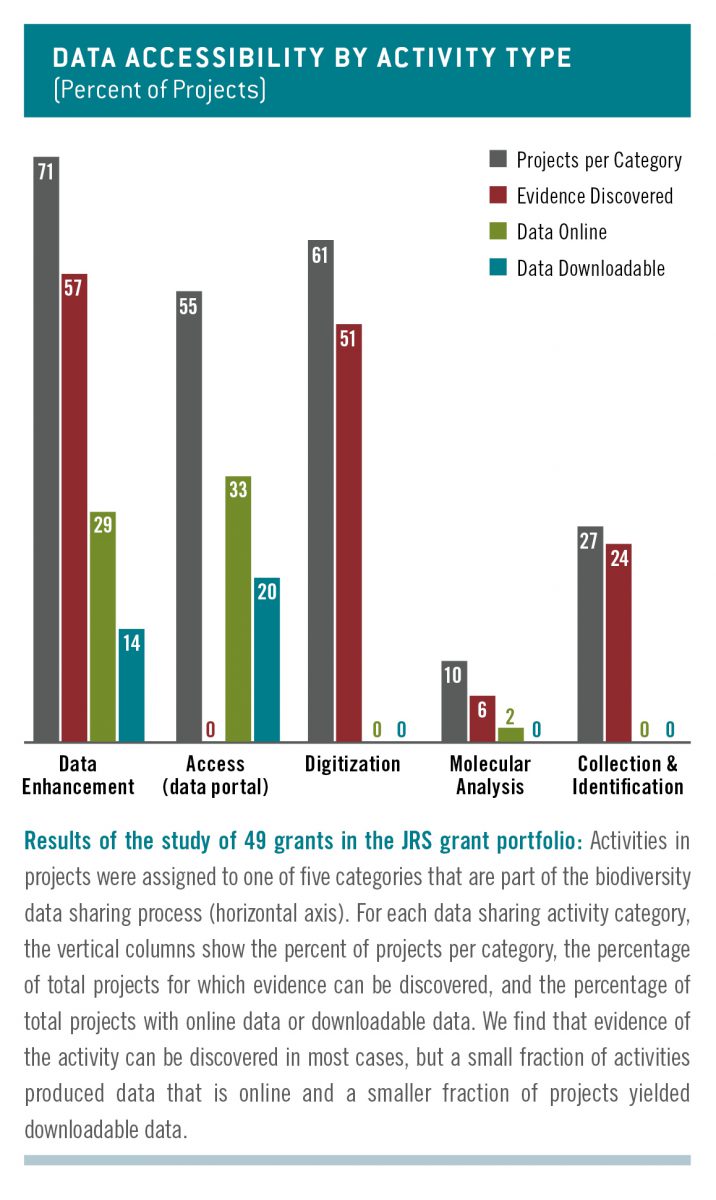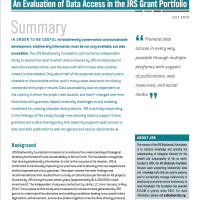We’ve all heard the one about the tree falling in the forest, but here’s your biodiversity koan for the day: If a biodiversity datum is produced, and no one can find it, does it create change?
JRS Biodiversity Foundation contracted an independent study to explore just how often the first part of that question is true; that is, how easy is it to find and use biodiversity data produced by 49 selected JRS-funded projects? The new JRS report Show Me the Data: An Evaluation of Data Access in the JRS Grant Portfolio suggests that the data produced by the 49 projects are less accessible than hoped.
The study, conducted by Jante LLC, asked whether information expected to have been produced by JRS projects was actually discoverable online, and accessible online. “Discoverable” meaning: How easy is it to find out that the data exist? And “accessible” meaning: How easy is it to see or download the data directly? The project data fell on a spectrum, ranging from datasets that were easy to find and download via a simple search, to datasets that were mentioned online but which couldn’t be viewed or accessed directly, to data that were apparently undiscoverable on the internet. In addition, the study asked whether familiarity with the projects increased data accessibility: do you have to know about the project to be able to find and obtain that information? The assumption is that, overall, data will be used less if data seekers have to do targeted searches or requests.
 The results of this investigation serve as a call to action for JRS: only about half of the expected data products were viewable or discoverable online. The figure below shows that the accessibility of data also depended on the type of project activity.
The results of this investigation serve as a call to action for JRS: only about half of the expected data products were viewable or discoverable online. The figure below shows that the accessibility of data also depended on the type of project activity.
The report also includes a list of 12 recommendations for projects with data-sharing components. These offer suggestions on how projects might best communicate with collaborators, optimize the workflow, maximize visibility of the published information, and plan for sustainability of the data resources.
We’ve learned that we can do more to support data accessibility, and JRS is taking action by implementing a new data sharing policy for grantees that will govern grant applications, the selection process, grant agreements, and reports. The policy outlines the goals of ensuring accessibility of biodiversity information, and sets clear expectations for the management of data products produced by JRS projects. To support grantees in showcasing the data they generate, JRS will also be providing planning tools to foster data discovery and sharing.
We are gratified to share this report and what we have learned — so far — about how foundations might facilitate the use and sharing of biodiversity data and tools. In developing our Open Data Policy, JRS is proud to join a growing number of international organizations and donors taking a strong position in support of truly open access. We have confidence that well-publicized and easily obtainable biodiversity information will foster increased data use and collaboration in decision-making, improved funding for research and conservation, and ultimately, more effective preservation of biological diversity worldwide.
Click on the report thumbnail below to view the full document:


